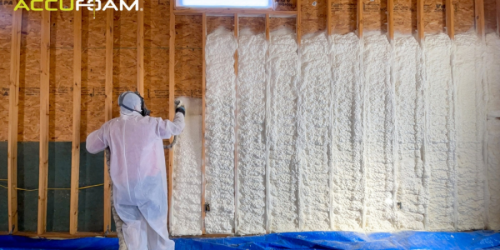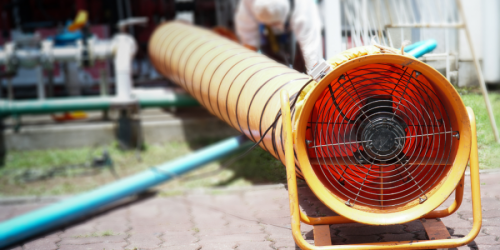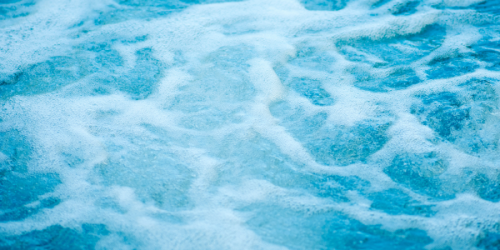Q&A Forums
2" Closed Cell in Walls? Is There a Problem w/Moisture Post New Topic | Post Reply
| Author | Comments |
|---|---|
|
Gerard G
Posted: Jun 05, 2015 12:57 AM
|
2" Closed Cell in Walls? Is There a Problem w/Moisture
I am in S Louisana and always sprayed 2" of closed cell in walls for several reasons instead of open cell. The first one is because I feel it is less time consuming/waste as far as clean up from open cell shavings and it is not as messy as far as housekeeping is concerned on a job site. Second I believe it makes the structual/tensil strengh of the home far greater. Third in case of a flood, which unfortunetly is common in S Louisiana, the foam in most cases does not need to be removed if a quality product has been applied correctly. Last but not least it is a better insulation than open cell, not knocking open cell as it is the second to best insualtion out there in my opinion. After reading over the site for some time now I would really like some opinions on if the air void in the wall between the drywall and the foam is a concern for a moisture problem down the road. I have even sprayed 1" of closed cell in the past on a framed conditioned shop of mine as well as a family members roughly ten years ago as a test/freebee. They both preform excellent energy and insulation wise but I am mainly concerned if moisture is going to be a major problem for me in the future. Any and all opinions are greatly appreciated so fire away.
|
|
jimcoler
I have over 10 years of experience specifying and installing open and closed cell spray foam. I've sold my business but I'm still selling for the new owners and consulting on large and custom specific jobs. I've expanded my knowledge into t Posted: Jun 05, 2015 07:42 AM
|
I personally prefer open cell but 2" minimum of closed cell can work fine. That being said, the largest concern is along the wood wall studs where you only have 2"-2.5" of wood which equates to about an R-2-3. This is where condensation will occur first. With open cell, you fill up the majority of the cavity and then you minimize the thermal transfer through the studs. You can also spray up the stud and coat the inside edge with at least an inch of closed cell and this should help prevent condensation from occurring or at least it shouldn't grow mold and milder inside the wall. Just a clarification, it's my understanding that open cell isn't damaged if it's given a chance to dry out. I'm from Upstate NY and don't have experience with Louisiana weather but is the concern the time it takes to dry out? How can closed cell protect the wall from moisture better than open cell when open cell allows a very small amount of moisture to pass through it? |
|
mason
Posted: Jun 05, 2015 02:33 PM
|
The more humid the interior space the greater potential for condensation, but if the house interior is 60% humidity or less, you should not have a problem. In northern climates you may need thicker foam in the walls to minimize the potential for condensation. But in warm or mid climate regions 1-2 inches is sufficient. |
|
Gerard G
Posted: Jun 22, 2015 10:56 AM
|
Jim sorry it took so long to respond. Had trouble with my account. While open cell will dry out and not be damaged by moisture, flooding where open cell is saturated for days becomes soaked and all should be removed and areas in wall treated for mold,etc. I always picture frame and fill my bays covering studs completely. Closed cell, when properly installed, can with stand standing water for a substantial period of time. How long, who knows, but some homes I have seen after aprox a week of water hold up just fine (Katrina) while the homes with open cell insulation had to be removed. Not saying it would have not dried out but insurance companies want all saturated materials removed ASAP. I think open cell is great just not for tensil strength and standing water. |
|
mason
Posted: Jun 23, 2015 08:43 AM
|
Platts, closed cell SPF is approved by the US government for use in severe flood zone areas. I can send you a copy of FEMAs technical bulletin about this. As for water saturation of closed cell foam, it really depends on how much hydrostatic pressure the foam experiences. For example, a sample of foam sitting in a cup of water will not absorb water, but will absorb water when submerged in 2 ft of water. I am sure there are calculations that can more precisely estimate the amount of water absorption under varying conditions, but the following personal experience can provide some idea of the relative water absorption of a nominal 2.5 pcf density foam. I sprayed 10 inches of 2.5 pcf ccSPF to a floating dock for a restaurant on South Padre Island Texas. I wanted to apply a waterproofing coating over the foam, but they could not afford it. They left the dock in the water for about 4-6 months, then took it out in the fall and winter. The foam would be dry above 2 ft and 1/2 inch of foam saturated 2 ft down. This gives you some idea of the relative water absorption of a nominal 2.5 pcf density foam. The lower the density the less water resistance it would have, so a nominal 2 pcf density foam might have greater water absorption under the same conditions. |
|
Gerard G
Posted: Jun 24, 2015 11:06 AM
|
Mason i would think the only reason the 2.5lb absorbed water was due to deterioration from not having a protective coating. (I could be completely wrong in my theory) Foam is not meant to be exposed to uv rays not even for a day as you know. We prime our foam roofs the same day to prevent the foam from deteriorating. It's amazing when we first started and didn't know to protect the foam the same day. Unprotected foam absorded so much more coatings compared to it being primed the same day. Thanks for the detailed info. I was more less answering jim about how cc protects better than oc. Either way love the site and what is to be learned here. Finally have some people to talk foam with and not get the old "I have no idea what your talking about, you lost me at etc etc etc foam" |
|
mason
Posted: Jun 24, 2015 02:51 PM
|
Yes a protective coating will prevent UV degradation on foam, but in this case the upper 2 ft of the foam did not have water absorbed into, while the foam that was 2 ft and more below the water (where the UV would be less) had the saturation. I looked up what pressure is exerted by water, Hydrostatic pressure is about 2.5 psi at 1 ft and about 14-15 psi at 10 ft. |





























